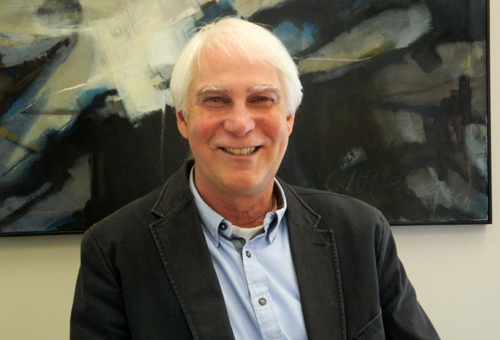
Becoming an administrator was never part of John Livernois’s plans or ambitions, yet he is currently filling not one but two administrative roles. Livernois has been associate vice-president of the Office of Research Services for the past two years and recently added the responsibilities of the interim vice-president of research to his daily workload.
Fortunately, he’s found the work thoroughly enjoyable, perhaps because of his heartfelt passion for the value of research and its importance to the University. As he points out, when research funding grants are awarded, the benefits go well beyond the direct contributions.
“The grants affect our allocation of Canada Research Chairs, our funding by the federal government for indirect costs, and our ranking as compared to other universities. It affects the students as well. With more funding, more graduate students can be hired, we have better labs and equipment for students to use, and this feeds back into the quality of research done here.”
Livernois was previously chair of the Department of Economics and Finance and conducted his own research on the economics of natural resources, looking primarily at policies related to taxation and regulation of natural resource industries.
“We construct models of these industries to try to understand how a change in the tax system, for example, would change how the industry behaves,” he explains. This expertise led to work for the governments of Canada, Ontario, Alberta and Indonesia. He was also involved in a project for the Canadian International Development Agency in Malaysia.
A graduate of the University of British Columbia, he taught at the University of Alberta for nine years prior to coming to U of G.
When the provincial government launched an inquiry into the water-contamination crisis that happened in Walkerton, Ont., in 2000, Livernois was asked to investigate the socio-economic impact of the events.
“The tragedy in Walkerton made people realize how vulnerable we are,” he says. “My work was to highlight the costs to the community, the health-care system and the government. It showed that the investment in changing policies and putting procedures into place to prevent another water disaster was worthwhile, because it would reap benefits in the long run.”
Livernois is also the author of a textbook called Mathematics for Economics. Now in its third edition, the textbook has been translated into several languages and is used in universities around the world.
In his new roles, though, he is immersed in the various aspects of research across campus. “What I like about my work now is that I am involved with all parts of the University and I’m learning new things every day,” he says. “The other thing I enjoy is being in a position to do what I can to facilitate research – to remove any hurdles or roadblocks and create opportunities for people. It’s a lot of fun to help people and solve problems.”
One possible roadblock he has observed is that writing grant applications can be challenging, especially for newer researchers. Livernois and staff at the Office of Research worked with the associate deans of research from all of the colleges, using a collaborative team approach to encourage mentoring of new faculty by senior faculty in writing grant applications.
“We also held a two-day workshop, led by an external company that specializes in grant applications, with the participation of some of our senior faculty.”
Livernois emphasizes that the most important factor in the success of a grant application is the quality of the research proposal. “What we hope faculty learn through the mentoring and workshops is how to put the icing on the cake – to create an application that is thorough and clear and shows the research in its best light. The success we have had is due to the faculty who wrote excellent applications.”
There are, of course, many factors involved in determining which applications are funded, but Livernois was very encouraged when he received a call from Janet Waldon, chief operating officer at the National Science and Engineering Council of Canada, to congratulate U of G on its successes. The results:
- U of G had a 100-per-cent success rate with early career applicants (compared to the 66-per-cent national average)
- U of G had an 84-per-cent success rate with established researchers seeking grant renewals (compared to the 80-per-cent national average)
- U of G had a 42-per-cent success rate with established researchers seeking new grants (compared to the 37-per-cent national average)
- Overall, 68 per cent of U of G applicants were successful, compared to a 64-per-cent average nationally.
Livernois sees this as the first step in a longer-term plan. “We are going to continue what we’ve started. A second set of workshops, co-ordinated by the Office of Research Services, has recently been completed. The office recruited a number of leading faculty to provide guidance, tips and feedback on sample grant applications. Three separate workshops have been held, one for each of the grant areas. And we are continuing to encourage mentoring, right down to the department level.”
Beyond his goal of continuing to support researchers at work, Livernois’s own long-term plans include enjoying his new 34-foot sailboat. New to him, he adds, but the boat is actually 35 years old. “I am a fairly new sailor,” he says, “but I’m taking courses and reading everything, and I’m planning to sail in Georgian Bay this summer.”
He lives in Guelph with his partner, Janette. Their children – they each have two – are grown and attending universities around the world.